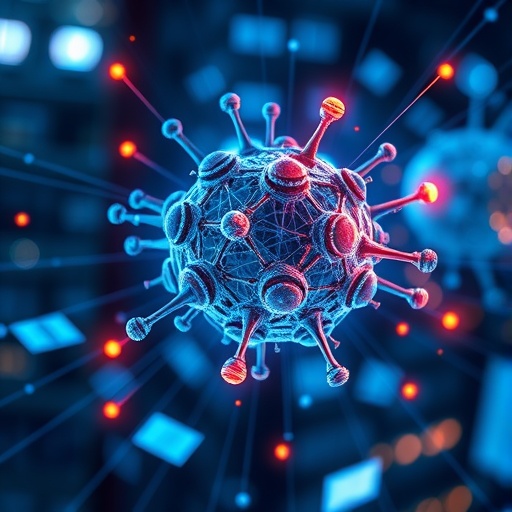In a groundbreaking advancement melding artificial intelligence with complex network theory, researchers at the Korea Advanced Institute of Science and Technology (KAIST) have unveiled an innovative AI model designed to revolutionize the analysis of intricate real-world relationships. This new technology, known as MARIOH (Multiplicity-Aware Hypergraph Reconstruction), offers an unprecedented ability to reconstruct hidden higher-order interactions from limited low-order data, overcoming barriers that have long challenged scientists across numerous disciplines.
At its core, MARIOH addresses a fundamental problem in understanding complex systems: interactions rarely occur in simple pairs. Much like a lively meeting involving many participants simultaneously exchanging thoughts, many real-world phenomena—from social networks to neuroscientific processes—involve multi-entity interactions that cannot be fully captured by pairwise relationships alone. Traditional analytical approaches often reduce these complexities into binary linkages between entities, a simplification that obscures the richness of actual group dynamics and limits the depth of insights achievable.
The challenge lies in the fact that higher-order interactions, which involve multiple entities interacting concurrently, are inherently difficult to observe directly. In many domains, only low-order interactions, such as pairwise connections, are readily measurable and recorded. Reconstructing the full picture of multi-entity relationships from such limited data is a complex inverse problem, as numerous potential higher-order structures can correspond to the same set of pairwise interactions. Scientists have struggled to efficiently and accurately infer these structures, hindering progress in understanding collective behaviors and complex system dynamics.
MARIOH’s innovation stems from a novel use of multiplicity information embedded within low-order interactions. Where other models treat pairwise links as uniform and isolated, MARIOH distinguishes how many times each low-order interaction occurs across different higher-order groupings. This multiplicity acts as a critical fingerprint, narrowing down the feasible configurations of multi-entity interactions that could give rise to the observed lower-order data. By leveraging this insight, the search space for potential higher-order structures shrinks dramatically, enabling more focused and practical reconstruction efforts.
Beyond this conceptual breakthrough, the KAIST team implemented efficient search algorithms paired with multiplicity-based deep learning frameworks to evaluate candidate higher-order interactions quickly. The model effectively prioritizes probable combinations, learning patterns that signal genuine multi-entity groupings over mere random coincidences. This synergy of algorithmic efficiency and machine learning accuracy empowers MARIOH to distinguish subtle, complex structures embedded beneath the surface of low-order observations.
The results speak volumes about MARIOH’s capabilities. In comprehensive experiments across ten real-world datasets spanning diverse domains, MARIOH consistently outperformed existing hypergraph reconstruction methods by achieving reconstruction accuracy improvements up to 74%. Such an enhancement signifies not merely incremental progress but a major step forward, fundamentally shifting the attainable precision in multi-entity interaction recovery.
For instance, in one of the most illustrative cases involving scientific co-authorships from the extensive DBLP database, MARIOH reconstructed higher-order collaborations with an accuracy exceeding 98%. This is a stark improvement compared to previous approaches that peaked around 86% accuracy. Accurately discerning these research group formations enhances our grasp of scientific collaboration networks, aiding bibliometric analyses and potentially guiding policymaking in research funding.
Improved reconstruction of multi-entity interactions also translates into performance gains in downstream analytical tasks such as classification and prediction. Networks enriched with authentic higher-order structures provide a more truthful and detailed substrate for machine learning models and statistical analyses. Consequently, MARIOH’s outputs enable other AI-driven applications to make more reliable inferences and decisions, broadening the impact of this technology well beyond mere data reconstruction.
The implications of this research ripple across multiple scientific arenas. In social network analysis, MARIOH could elucidate the architecture of group conversations, online communities, or collaborative ventures, offering nuanced insights into how information and influence propagate through multiple individuals acting simultaneously. In the life sciences, the ability to identify complex protein complexes or gene regulatory networks from fragmentary pairwise data opens new avenues for understanding cellular mechanisms and disease pathways.
Equally promising is the application to neuroscience, where brain functions often depend on synchronous activity across multiple regions. MARIOH’s capacity to reconstruct such higher-order neurological interactions can deepen our knowledge of brain connectivity and function, potentially advancing diagnostic and therapeutic techniques for neurological disorders. The model’s versatility and robustness lend it adaptability across many fields confronting similar challenges of hidden multi-entity structure inference.
Led by Professor Kijung Shin and his team at the Kim Jaechul Graduate School of AI, the development of MARIOH represents the culmination of rigorous theoretical innovation and meticulous empirical validation. The research was formally presented at the prestigious 41st IEEE International Conference on Data Engineering (ICDE) held in Hong Kong, signaling the work’s recognition and endorsement by leading experts in data science and engineering.
This breakthrough was made possible with the support of major funding bodies, including the Institute of Information & Communications Technology Planning & Evaluation (IITP) for the “EntireDB2AI” project focusing on deep representation learning from comprehensive relational databases, alongside backing from the National Research Foundation of Korea’s “Graph Foundation Model” initiative dedicated to versatile graph-based machine learning. Such institutional support underscores the strategic importance and transformative potential of this research.
As the complexity of data encountered in science and technology continues escalating, tools like MARIOH that unveil hidden structures promise to redefine how we interpret, analyze, and intervene in multi-faceted systems. The ability to reconstruct and leverage higher-order interactions accurately could pave the way for smarter AI applications that grasp the collective nuances of real-world phenomena rather than mere simplified snapshots.
Ultimately, MARIOH exemplifies the growing synergy between AI and domain-specific knowledge, demonstrating how intricate mathematical insights combined with state-of-the-art machine learning can surmount longstanding conceptual and technical hurdles. As this model is adopted and further refined, the doors open to a new era of discovery where the hidden complexity behind low-level data gives way to meaningful, actionable understanding.
Subject of Research: Not applicable
Article Title: Multiplicity-Aware Hypergraph Reconstruction
Web References: http://dx.doi.org/10.1109/ICDE65448.2025.00233
Image Credits: KAIST
Keywords: Artificial Intelligence, Higher-Order Interactions, Hypergraph Reconstruction, Multiplicity, Deep Learning, Social Network Analysis, Neuroscience, Life Sciences, Complex Systems, Machine Learning, Data Engineering, KAIST




